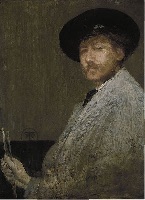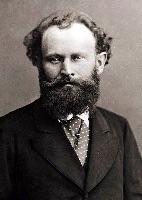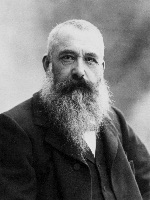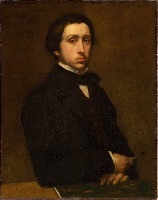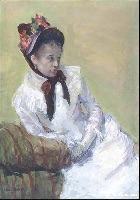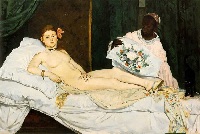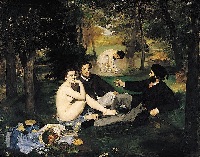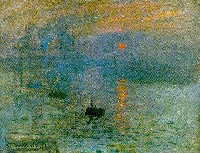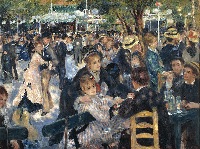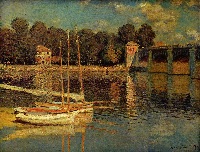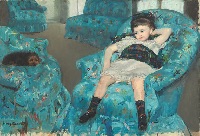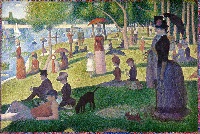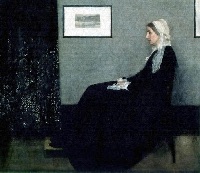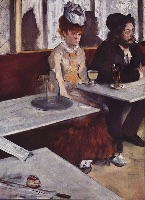Impressionism originated with a group of Paris-based artists whose independent exhibitions brought them to prominence during the 1870s and 1880s. The name of the style is derived from the title of a Claude Monet work, Impression, soleil levant (Impression, Sunrise). Characteristics of Impressionist paintings include relatively small, thin, yet visible brush strokes; open composition; emphasis on accurate depiction of light in its changing qualities (often accentuating the effects of the passage of time); common, ordinary subject matter; the inclusion of movement as a crucial element of human perception and experience; and unusual visual angles.
Salon de Paris
1748-1890
In the 19th century the idea of a public Salon extended to an annual government-sponsored juried exhibition of new painting and sculpture, held in large commercial halls, to which the ticket-bearing public was invited. The vernissage (varnishing) of opening night was a grand social occasion, and a crush that gave subject matter to newspaper caricaturists like Honoré Daumier. Charles Baudelaire, Denis Diderot and others wrote reviews of the Salons. The Salon exhibited paintings floor-to-ceiling and on every available inch of space. The jostling of artwork became the subject of many other paintings, including Pietro Antonio Martini's Salon of 1785. Printed catalogues of the Salons are primary documents for art historians. Critical descriptions of the exhibitions published in the gazettes marks the beginning of the modern occupation of art critic.
Salon de Refusés
1874-1886
As early as the 1830s, Paris art galleries had mounted small-scale, private exhibitions of works rejected by the Salon jurors. The glamorous event of 1863 was actually sponsored by the French government. In that year, artists protested the Salon jury’s rejection of more than 3,000 works, far more than usual. "Wishing to let the public judge the legitimacy of these complaints," said an official notice, Emperor Napoléon III decreed that the rejected artists could exhibit their works in an annex to the regular Salon. Many critics and the public ridiculed the refusés, which included such now-famous paintings as Édouard Manet's Luncheon on the Grass (Le déjeuner sur l’herbe)band James McNeill Whistler's Symphony in White, No. 1: The White Girl. But the critical attention also legitimized the emerging avant-garde in painting. The Impressionists successfully exhibited their works outside the Salon beginning in 1874. Subsequent Salons des Refusés were mounted in Paris in 1874, 1875, and 1886, by which time the popularity of the Paris Salon had declined for those who were more interested in Impressionism, this was not the case for the artist Manet who still wanted to be acclaimed by the original Salon, looking for permanence and nobility like many other traditionalists.
